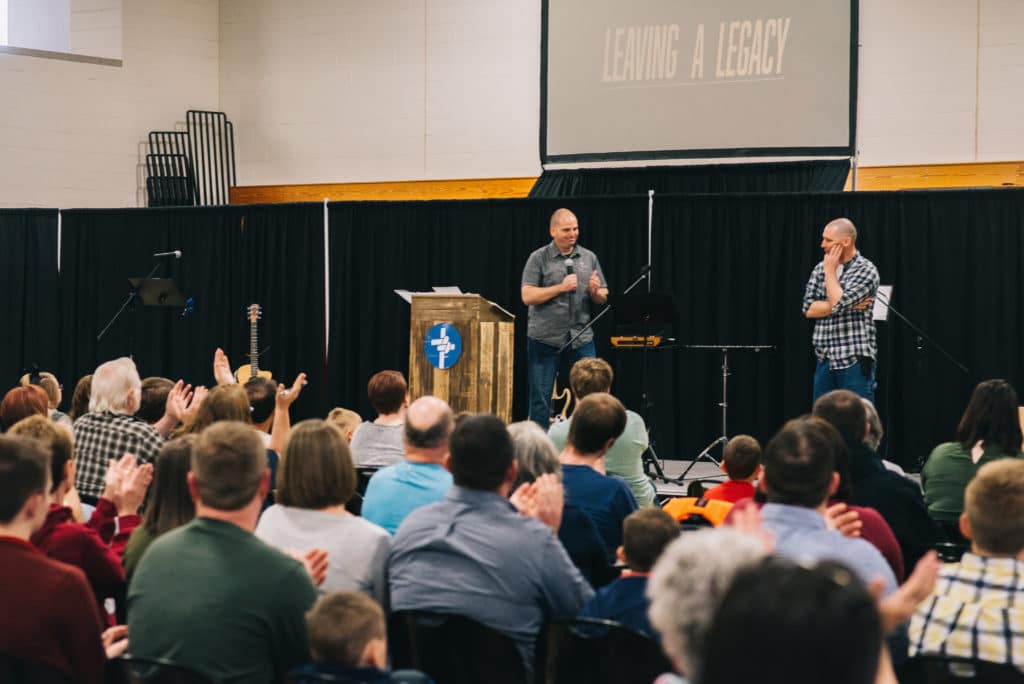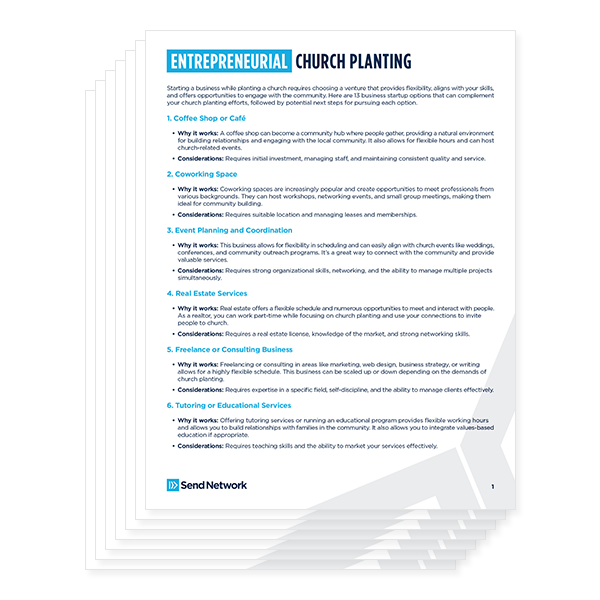In September 2013 we set up a Saturday night Bible study in our family room and started inviting friends and neighbors. A year later, with help from Send Network, we launched The Gathering Church in Windsor, Ontario.
By 2020, just before the COVID-19 pandemic changed everything, we had over 300 people jammed into our worship space on Sunday morning.
There comes a time in the life of every new church when you shift from church planter to church pastor, or you hand off your church plant to a pastor who will pastor the church you planted.
At this point, you’re no longer viewed as a church planter. Now, you’re seen as a church pastor. If you fail to recognize this evolution, embrace the differences and adjust your leadership, you will experience frustration, disappointment and defeat.
Innovation to Self-protection
Dr. Tony Lynn, State Director of Missions in Michigan, asserts church plants often start out highly innovative, making course corrections quickly and effectively. In contrast, established churches often slide into protection-mode, defending their traditions and customs, which stifles creativity and innovation.
“The flurry of a start-up is very different from the navigation of an established church, especially when the traditions of the church must be reimagined to go to the next level,” writes Peter Blackaby, Send City Missionary for Vancouver, British Columbia.
Planters and pastors should strive for creative, fresh, inventive approaches to ministry wherever God has called them to serve.
Evangelism to Discipleship
As a church planter, you are often the primary leader and principal evangelist. You do most of the heavy lifting when it comes to sharing the gospel and inviting people to believe in Jesus, not only from the pulpit, but in the community as well. You are often the one who brings people to Jesus (John 1:42).
A pastor’s thinking and strategy shifts from evangelizing future disciples to discipling future evangelists. You stay on mission, keep sharing the gospel and engaging the community, but you must also equip, train and encourage every believer in your church to become an evangelist to ensure your congregation remains healthy, growing and vibrant for the glory of God.
Leading to Empowering
As the church planter, you lead the young organization in a hands-on and deliberate way. You are involved in nearly every decision, every meeting, every activity. “When the planter starts with a loyal launch team, he is given a lot of freedom to make major decisions,” observes Lynn.
As you make the transition from planter to pastor, and your church matures, learning to delegate and empower others to lead is key. According to Lynn, “The adjustment needed can be summed up in the word: ‘inclusion.’” You involve and empower others. This is critical to your own health, sanity, and ultimately, the mission God has entrusted to you.
“By the five-to-eight-year mark, the planter’s own strengths, weaknesses and passions will be evident in the life of the church. If he has not been intentional to raise up leaders that balance or complement him, it will be a huge hurdle to overcome,” said Blackaby.
In short, as a planter you train leaders, and as a pastor you lead trainers.
Enthusiasm to Structure
This has been the hardest part of the changeover for me. Planters often begin with a handful of excited, motivated people who want to make a difference in the world for Jesus. You launch with enthusiasm, and every time you have a baptism service or a church anniversary, they dance for joy!
As the organism matures, the organization expands. Then you put structures in place. You write policies, procedures and playbooks. You form boards and committees. It’s enough to suck the life out of an enthusiastic church planter if he doesn’t make the switch in time.
You can’t rely on excitement to carry you 10 years in. You need more. You need logistics, planning, administration, systems. You need structure. You need deacons and elders and Sunday School teachers.
Lynn adds, “Very few men make the transition from leading a church plant to sustaining an established church with a healthy, multiplying ministry.”
Short-term to Long-term Planning
“Planters plan for the next 10 days, while pastors plan for the next 10 years,” says Pete Pawelek, Senior Pastor of Cowboy Fellowship in Jourdanton, Texas.
Early in a busy church plant, it is difficult to see much farther than the next 7-10 days. There are so many things to do and so few to help do it.
However, over time, as you transition from planting to pastoring, it is critical you begin to think long-range.
“The plans of the diligent surely lead to abundance” (Proverbs 21:5).
The Malphurs Group, a group of church leaders who focus on helping churches, maintains “strategic planning is key to the long-term survival of the church. Its ministry circumstances are constantly changing. To survive, churches must change and adapt their ministry methods, using strategic planning as their vehicle.”
Getting Credit to Giving Credit
At the North American Mission Board’s church planting arm, Send Network, church planters are deeply cared for. Send Network spoils us with encouragement, seminars, training and more!
We get tons of credit. Which means, we have a lot of credit to give away.
When or if you make the transition to pastoring the church you plant, it’s critical you give the credit away to others who are leading and serving in your church. Give thanks for their partnership in the gospel (Philippians 1:5). Without the hard work and dedication of all your volunteers, most of our churches would get very little done. Honor your unpaid servants often!
Moving from Casting Vision to Cultivating Vision
As a church planter, you cast vision over and over to ensure everyone in your young church understands and believes in that vision. Frequent vision-casting is biblical (1 Samuel 3:1)!
Once the vision of your church is deeply rooted in the DNA of your church, you should slowly move from casting to cultivating the vision. And remember, “vision leaks.” Vision doesn’t stick. You’ve repeated your vision for the church a thousand times, and yet….
Keep church simple. Cast vision and then cultivate it. Keep the soil fertile. Preach the Word, not your opinions. Love your people, spend time with them and share your vision repeatedly.
Brian Bloye, senior pastor at West Ridge Church in Dallas, Georgia admits, “The biggest challenge is keeping the vision fresh and keeping people’s focus outward. People (staff and volunteers) tend to default to inward thinking. Established churches stop growing because they lose focus on why they started. My greatest challenge is to help people to not get comfortable and settled. As long as there are lost people in my community, our work is not done at West Ridge.”
Adding to Multiplying
When you are planting, you pray and work your fingers to the bone to add new people — new believers, new members, new workers. You are adding them one by one.
In an established church, the goal should be multiplication at every level. We want to plant more churches everywhere for everyone. So, we need to multiply the number of disciples and church plants, continually increasing (Acts 9:31). Let’s not be satisfied with adding one or two here and there.
And whether you find yourself in the season of church planting, church pastoring or somewhere in between, remember this hope: God is committed to building and establishing His Church, and the gates of Hell won’t prevail against it.
For more resources on how to start a new church visit NewChurches.com.
Dr. Garth Leno lives in Windsor, Ontario, Canada, where he planted The Gathering in 2014 with help from Send Network. He holds degrees from Trinity Evangelical Divinity School, Bethel Theological Seminary and Southeastern Baptist Theological Seminary.
Published December 16, 2021




